196 papers:
 DAC-2015-LiuZ #configuration management #performance
DAC-2015-LiuZ #configuration management #performance- A reconfigurable analog substrate for highly efficient maximum flow computation (GL, ZZ), p. 6.
 SIGMOD-2015-ChangLQYZ #algorithm #component
SIGMOD-2015-ChangLQYZ #algorithm #component- Index-based Optimal Algorithms for Computing Steiner Components with Maximum Connectivity (LC, XL, LQ, JXY, WZ), pp. 459–474.
 SIGMOD-2015-VerroiosLG #crowdsourcing #named
SIGMOD-2015-VerroiosLG #crowdsourcing #named- tDP: An Optimal-Latency Budget Allocation Strategy for Crowdsourced MAXIMUM Operations (VV, PL, HGM), pp. 1047–1062.
 VLDB-2015-LiuLYXW #graph #independence #set #towards
VLDB-2015-LiuLYXW #graph #independence #set #towards- Towards Maximum Independent Sets on Massive Graphs (YL, JL, HY, XX, ZW), pp. 2122–2133.
 VLDB-2015-MouratidisZP #query #rank
VLDB-2015-MouratidisZP #query #rank- Maximum Rank Query (KM, JZ, HP), pp. 1554–1565.
 ICALP-v1-2015-GawrychowskiMW #matrix #query
ICALP-v1-2015-GawrychowskiMW #matrix #query- Submatrix Maximum Queries in Monge Matrices Are Equivalent to Predecessor Search (PG, SM, OW), pp. 580–592.
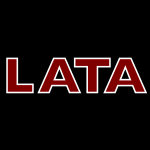 LATA-2015-DaiW #algorithm #parallel #random #sequence
LATA-2015-DaiW #algorithm #parallel #random #sequence- A Parallel Algorithm for Finding All Minimal Maximum Subsequences via Random Walk (HKD, ZW), pp. 133–144.
 CHI-2015-CarterH #design #research
CHI-2015-CarterH #design #research- Designing Autism Research for Maximum Impact (EJC, JH), pp. 2801–2804.
 KDD-2015-LeeWK #consistency #constraints #difference #privacy
KDD-2015-LeeWK #consistency #constraints #difference #privacy- Maximum Likelihood Postprocessing for Differential Privacy under Consistency Constraints (JL, YW, DK), pp. 635–644.
 SIGIR-2015-Paik #information retrieval #probability
SIGIR-2015-Paik #information retrieval #probability- A Probabilistic Model for Information Retrieval Based on Maximum Value Distribution (JHP), pp. 585–594.
 DATE-2014-YuSHEAB #estimation #performance #physics
DATE-2014-YuSHEAB #estimation #performance #physics- Efficient performance estimation with very small sample size via physical subspace projection and maximum a posteriori estimation (LY, SS, CH, IME, DAA, DSB), pp. 1–6.
 DocEng-2014-Fan0N #using
DocEng-2014-Fan0N #using- Paper stitching using maximum tolerant seam under local distortions (WF, JS, SN), pp. 35–44.
 DLT-2014-KociumakaRRW #standard #word
DLT-2014-KociumakaRRW #standard #word- Maximum Number of Distinct and Nonequivalent Nonstandard Squares in a Word (TK, JR, WR, TW), pp. 215–226.
 ICALP-v1-2014-ColeK #algorithm #performance #summary
ICALP-v1-2014-ColeK #algorithm #performance #summary- Fast Algorithms for Constructing Maximum Entropy Summary Trees (RC, HJK), pp. 332–343.
 ICALP-v1-2014-GawrychowskiMW #matrix #query
ICALP-v1-2014-GawrychowskiMW #matrix #query- Improved Submatrix Maximum Queries in Monge Matrices (PG, SM, OW), pp. 525–537.
 ICML-c1-2014-IyerNS #bound #convergence #estimation #kernel
ICML-c1-2014-IyerNS #bound #convergence #estimation #kernel- Maximum Mean Discrepancy for Class Ratio Estimation: Convergence Bounds and Kernel Selection (AI, SN, SS), pp. 530–538.
 ICML-c1-2014-OrabonaHSJ #on the #random
ICML-c1-2014-OrabonaHSJ #on the #random- On Measure Concentration of Random Maximum A-Posteriori Perturbations (FO, TH, ADS, TSJ), pp. 432–440.
 ICML-c2-2014-HuangCG #estimation #scalability
ICML-c2-2014-HuangCG #estimation #scalability- Scalable Semidefinite Relaxation for Maximum A Posterior Estimation (QXH, YC, LJG), pp. 64–72.
 ICML-c2-2014-KontorovichW #multi #nearest neighbour
ICML-c2-2014-KontorovichW #multi #nearest neighbour- Maximum Margin Multiclass Nearest Neighbors (AK, RW), pp. 892–900.
 ICPR-2014-BrownFP #detection #self #using
ICPR-2014-BrownFP #detection #self #using- Temporal Non-maximum Suppression for Pedestrian Detection Using Self-Calibration (LMGB, RSF, SP), pp. 2239–2244.
 ICPR-2014-LuZXGW #approximate #morphism #quantum
ICPR-2014-LuZXGW #approximate #morphism #quantum- Approximate Maximum Common Sub-graph Isomorphism Based on Discrete-Time Quantum Walk (KL, YZ, KX, YG, RCW), pp. 1413–1418.
 ICPR-2014-NguyenTHM #classification #novel
ICPR-2014-NguyenTHM #classification #novel- A Novel Sphere-Based Maximum Margin Classification Method (PN, DT, XH, WM), pp. 620–624.
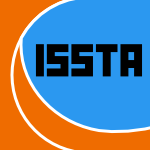 ISSTA-2014-GotliebM #named #network #reduction #testing
ISSTA-2014-GotliebM #named #network #reduction #testing- FLOWER: optimal test suite reduction as a network maximum flow (AG, DM), pp. 171–180.
 ISSTA-2014-LinK #automation #concurrent #multi #satisfiability #source code #thread #using
ISSTA-2014-LinK #automation #concurrent #multi #satisfiability #source code #thread #using- Automatic repair for multi-threaded programs with Deadlock/Livelock using maximum satisfiability (YL, SSK), pp. 237–247.
 SAT-2014-IgnatievMM #independence #on the #satisfiability #set
SAT-2014-IgnatievMM #independence #on the #satisfiability #set- On Reducing Maximum Independent Set to Minimum Satisfiability (AI, AM, JMS), pp. 103–120.
 STOC-2013-LeeRS #approach #using
STOC-2013-LeeRS #approach #using- A new approach to computing maximum flows using electrical flows (YTL, SR, NS), pp. 755–764.
 ICALP-v1-2013-0002BFGK
ICALP-v1-2013-0002BFGK- Minimizing Maximum (Weighted) Flow-Time on Related and Unrelated Machines (SA, KB, TF, NG, AK), pp. 13–24.
 ICALP-v1-2013-ChekuriNS #graph
ICALP-v1-2013-ChekuriNS #graph- Maximum Edge-Disjoint Paths in k-Sums of Graphs (CC, GN, FBS), pp. 328–339.
 ICALP-v1-2013-SviridenkoW #problem #scalability #set
ICALP-v1-2013-SviridenkoW #problem #scalability #set- Large Neighborhood Local Search for the Maximum Set Packing Problem (MS, JW), pp. 792–803.
 ICML-c1-2013-ChenWC
ICML-c1-2013-ChenWC- Maximum Variance Correction with Application to A* Search (WC, KQW, YC), pp. 302–310.
 ICML-c3-2013-Chatzis #infinity
ICML-c3-2013-Chatzis #infinity- Infinite Markov-Switching Maximum Entropy Discrimination Machines (SC), pp. 729–737.
 ICML-c3-2013-CortesMR #classification #kernel #multi
ICML-c3-2013-CortesMR #classification #kernel #multi- Multi-Class Classification with Maximum Margin Multiple Kernel (CC, MM, AR), pp. 46–54.
 ICML-c3-2013-PeharzTP #generative #network
ICML-c3-2013-PeharzTP #generative #network- The Most Generative Maximum Margin Bayesian Networks (RP, ST, FP), pp. 235–243.
 RecSys-2013-HammarKN #e-commerce #recommendation #using
RecSys-2013-HammarKN #e-commerce #recommendation #using- Using maximum coverage to optimize recommendation systems in e-commerce (MH, RK, BJN), pp. 265–272.
 LICS-2013-AndersonDH #fixpoint #linear #logic #programming
LICS-2013-AndersonDH #fixpoint #linear #logic #programming- Maximum Matching and Linear Programming in Fixed-Point Logic with Counting (MA, AD, BH), pp. 173–182.
 SAT-2013-IgnatievJM #approach #quantifier #satisfiability
SAT-2013-IgnatievJM #approach #quantifier #satisfiability- Quantified Maximum Satisfiability: — A Core-Guided Approach (AI, MJ, JMS), pp. 250–266.
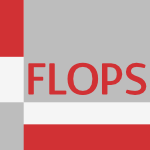 FLOPS-2012-Morihata #algorithm #parallel #problem
FLOPS-2012-Morihata #algorithm #parallel #problem- Calculational Developments of New Parallel Algorithms for Size-Constrained Maximum-Sum Segment Problems (AM), pp. 213–227.
 CIKM-2012-FanZCCO #clustering
CIKM-2012-FanZCCO #clustering- Maximum margin clustering on evolutionary data (XF, LZ, LC, XC, YSO), pp. 625–634.
 ICML-2012-DefazioC #collaboration #performance #visual notation
ICML-2012-DefazioC #collaboration #performance #visual notation- A Graphical Model Formulation of Collaborative Filtering Neighbourhood Methods with Fast Maximum Entropy Training (AD, TSC), p. 75.
 ICML-2012-HazanJ #on the #random
ICML-2012-HazanJ #on the #random- On the Partition Function and Random Maximum A-Posteriori Perturbations (TH, TSJ), p. 217.
 ICML-2012-PeharzP #learning #network
ICML-2012-PeharzP #learning #network- Exact Maximum Margin Structure Learning of Bayesian Networks (RP, FP), p. 102.
 ICML-2012-ZhangS
ICML-2012-ZhangS- Maximum Margin Output Coding (YZ, JGS), p. 53.
 ICPR-2012-XuanSCS #algorithm #using
ICPR-2012-XuanSCS #algorithm #using- An Enhanced EM algorithm using maximum entropy distribution as initial condition (GX, YQS, PC, PS), pp. 849–852.
 KDD-2012-HiraiY #clustering #detection #normalisation #using
KDD-2012-HiraiY #clustering #detection #normalisation #using- Detecting changes of clustering structures using normalized maximum likelihood coding (SH, KY), pp. 343–351.
 KDD-2012-RamG #using
KDD-2012-RamG #using- Maximum inner-product search using cone trees (PR, AGG), pp. 931–939.
 MLDM-2012-XuCG #concept #learning #multi #using
MLDM-2012-XuCG #concept #learning #multi #using- Constructing Target Concept in Multiple Instance Learning Using Maximum Partial Entropy (TX, DKYC, IG), pp. 169–182.
 SAC-2012-IkemotoDO #pseudo #reliability
SAC-2012-IkemotoDO #pseudo #reliability- Estimating software reliability via pseudo maximum likelihood method (SI, TD, HO), pp. 1171–1176.
 SAC-2012-SeelandBKP
SAC-2012-SeelandBKP- Maximum Common Subgraph based locally weighted regression (MS, FB, SK, BP), pp. 165–172.
 DAC-2011-Li #memory management
DAC-2011-Li #memory management- Rethinking memory redundancy: optimal bit cell repair for maximum-information storage (XL0), pp. 316–321.
 DATE-2011-HuangQ #constraints #energy #realtime
DATE-2011-HuangQ #constraints #energy #realtime- Leakage aware energy minimization for real-time systems under the maximum temperature constraint (HH, GQ), pp. 479–484.
 PLDI-2011-JoseM #fault #locality #satisfiability #using
PLDI-2011-JoseM #fault #locality #satisfiability #using- Cause clue clauses: error localization using maximum satisfiability (MJ, RM), pp. 437–446.
 STOC-2011-BravermanR #communication #fault #interactive #towards
STOC-2011-BravermanR #communication #fault #interactive #towards- Towards coding for maximum errors in interactive communication (MB, AR), pp. 159–166.
 STOC-2011-ChristianoKMST #approximate #graph #performance
STOC-2011-ChristianoKMST #approximate #graph #performance- Electrical flows, laplacian systems, and faster approximation of maximum flow in undirected graphs (PC, JAK, AM, DAS, SHT), pp. 273–282.
 ICALP-v2-2011-AhnG #linear #problem #programming
ICALP-v2-2011-AhnG #linear #problem #programming- Linear Programming in the Semi-streaming Model with Application to the Maximum Matching Problem (KJA, SG), pp. 526–538.
 MLDM-2011-YokotaY #classification #estimation
MLDM-2011-YokotaY #classification #estimation- Quadratically Constrained Maximum a Posteriori Estimation for Binary Classifier (TY, YY), pp. 1–15.
 SAC-2011-KatayamaKKM #algorithm #clique #problem
SAC-2011-KatayamaKKM #algorithm #clique #problem- Memetic algorithm with strategic controller for the maximum clique problem (KK, AK, KK, HM), pp. 1062–1069.
 PPoPP-2011-HongKOO #algorithm #graph
PPoPP-2011-HongKOO #algorithm #graph- Accelerating CUDA graph algorithms at maximum warp (SH, SKK, TO, KO), pp. 267–276.
 SIGMOD-2010-TaoSL #graph
SIGMOD-2010-TaoSL #graph- Finding maximum degrees in hidden bipartite graphs (YT, CS, JL), pp. 891–902.
 STOC-2010-Hirai #bound #multi #problem
STOC-2010-Hirai #bound #multi #problem- The maximum multiflow problems with bounded fractionality (HH), pp. 115–120.
 ICALP-v1-2010-BonichonGHP
ICALP-v1-2010-BonichonGHP- Plane Spanners of Maximum Degree Six (NB, CG, NH, LP), pp. 19–30.
 ICALP-v1-2010-MakarychevMS #algorithm #approximate #polynomial #problem #reduction
ICALP-v1-2010-MakarychevMS #algorithm #approximate #polynomial #problem #reduction- Maximum Quadratic Assignment Problem: Reduction from Maximum Label Cover and LP-Based Approximation Algorithm (KM, RM, MS), pp. 594–604.
 CIKM-2010-FanWW #clustering #normalisation #performance #visual notation
CIKM-2010-FanWW #clustering #normalisation #performance #visual notation- Maximum normalized spacing for efficient visual clustering (ZGF, YW, BW), pp. 409–418.
 ECIR-2010-AgarwalC #algorithm #information retrieval #ranking
ECIR-2010-AgarwalC #algorithm #information retrieval #ranking- Maximum Margin Ranking Algorithms for Information Retrieval (SA, MC), pp. 332–343.
 ICML-2010-YangJJ #learning
ICML-2010-YangJJ #learning- Learning from Noisy Side Information by Generalized Maximum Entropy Model (TY, RJ, AKJ), pp. 1199–1206.
 ICML-2010-ZiebartBD #interactive #modelling #principle
ICML-2010-ZiebartBD #interactive #modelling #principle- Modeling Interaction via the Principle of Maximum Causal Entropy (BDZ, JAB, AKD), pp. 1255–1262.
 ICPR-2010-AriA #estimation #modelling #optimisation #using
ICPR-2010-AriA #estimation #modelling #optimisation #using- Maximum Likelihood Estimation of Gaussian Mixture Models Using Particle Swarm Optimization (CA, SA), pp. 746–749.
 ICPR-2010-DukkipatiYM #classification #feature model #modelling
ICPR-2010-DukkipatiYM #classification #feature model #modelling- Maximum Entropy Model Based Classification with Feature Selection (AD, AKY, MNM), pp. 565–568.
 ICDAR-2009-DoA #recognition
ICDAR-2009-DoA #recognition- Maximum Margin Training of Gaussian HMMs for Handwriting Recognition (TMTD, TA), pp. 976–980.
 STOC-2009-YoshidaYI #algorithm #approximate
STOC-2009-YoshidaYI #algorithm #approximate- An improved constant-time approximation algorithm for maximum~matchings (YY, MY, HI), pp. 225–234.
 ICALP-v1-2009-AgnarssonHL #algorithm #independence #problem #set
ICALP-v1-2009-AgnarssonHL #algorithm #independence #problem #set- SDP-Based Algorithms for Maximum Independent Set Problems on Hypergraphs (GA, MMH, EL), pp. 12–23.
 ICALP-v2-2009-AzarMMPS #adaptation #network
ICALP-v2-2009-AzarMMPS #adaptation #network- Maximum Bipartite Flow in Networks with Adaptive Channel Width (YA, AM, TM, DP, AS), pp. 351–362.
 CIKM-2009-GuZ #clustering
CIKM-2009-GuZ #clustering- Subspace maximum margin clustering (QG, JZ), pp. 1337–1346.
 CIKM-2009-LinLK #named #novel #similarity
CIKM-2009-LinLK #named #novel #similarity- MatchSim: a novel neighbor-based similarity measure with maximum neighborhood matching (ZL, MRL, IK), pp. 1613–1616.
 ICML-2009-GiesekePK #clustering #performance
ICML-2009-GiesekePK #clustering #performance- Fast evolutionary maximum margin clustering (FG, TP, OK), pp. 361–368.
 ICML-2009-ZhuAX #classification #modelling #named #topic
ICML-2009-ZhuAX #classification #modelling #named #topic- MedLDA: maximum margin supervised topic models for regression and classification (JZ, AA, EPX), pp. 1257–1264.
 RecSys-2009-WeimerKB #matrix #recommendation
RecSys-2009-WeimerKB #matrix #recommendation- Maximum margin matrix factorization for code recommendation (MW, AK, MB), pp. 309–312.
 GPCE-2009-NedunuriC #performance #problem #source code #synthesis
GPCE-2009-NedunuriC #performance #problem #source code #synthesis- Synthesis of fast programs for maximum segment sum problems (SN, WRC), pp. 117–126.
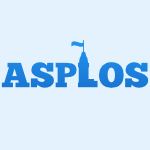 ASPLOS-2009-HofmannRW
ASPLOS-2009-HofmannRW- Maximum benefit from a minimal HTM (OSH, CJR, EW), pp. 145–156.
 DATE-2008-Marques-SilvaP #algorithm #satisfiability #using
DATE-2008-Marques-SilvaP #algorithm #satisfiability #using- Algorithms for Maximum Satisfiability using Unsatisfiable Cores (JMS, JP), pp. 408–413.
 PEPM-2008-Mu #algorithm #bound #problem
PEPM-2008-Mu #algorithm #bound #problem- Maximum segment sum is back: deriving algorithms for two segment problems with bounded lengths (SCM), pp. 31–39.
 ICALP-A-2008-CheboluFM #graph #random
ICALP-A-2008-CheboluFM #graph #random- Finding a Maximum Matching in a Sparse Random Graph in O(n) Expected Time (PC, AMF, PM), pp. 161–172.
 CIKM-2008-AnnexsteinS #clustering #collaboration #user satisfaction
CIKM-2008-AnnexsteinS #clustering #collaboration #user satisfaction- Collaborative partitioning with maximum user satisfaction (FSA, SS), pp. 1445–1446.
 ECIR-2008-YahyaeiM #email #retrieval
ECIR-2008-YahyaeiM #email #retrieval- Applying Maximum Entropy to Known-Item Email Retrieval (SY, CM), pp. 406–413.
 ICML-2008-DembczynskiKS
ICML-2008-DembczynskiKS- Maximum likelihood rule ensembles (KD, WK, RS), pp. 224–231.
 ICML-2008-KuzelkaZ #estimation #first-order #performance
ICML-2008-KuzelkaZ #estimation #first-order #performance- Fast estimation of first-order clause coverage through randomization and maximum likelihood (OK, FZ), pp. 504–511.
 ICML-2008-ZhaoWZ #clustering #multi #performance
ICML-2008-ZhaoWZ #clustering #multi #performance- Efficient multiclass maximum margin clustering (BZ, FW, CZ), pp. 1248–1255.
 ICML-2008-ZhuXZ #markov #network
ICML-2008-ZhuXZ #markov #network- Laplace maximum margin Markov networks (JZ, EPX, BZ), pp. 1256–1263.
 ICPR-2008-ChivertonMX #difference #similarity
ICPR-2008-ChivertonMX #difference #similarity- Variational Maximum A Posteriori model similarity and dissimilarity matching (JC, MM, XX), pp. 1–4.
 ICPR-2008-PiccardiGO #classification #modelling #reduction
ICPR-2008-PiccardiGO #classification #modelling #reduction- Maximum-likelihood dimensionality reduction in gaussian mixture models with an application to object classification (MP, HG, AFO), pp. 1–4.
 ICPR-2008-WangYY #analysis #fuzzy #recognition
ICPR-2008-WangYY #analysis #fuzzy #recognition- Fuzzy maximum scatter discriminant analysis and its application to face recognition (JW, WY, JY), pp. 1–4.
 ICPR-2008-YangWRY #feature model
ICPR-2008-YangWRY #feature model- Feature Extraction base on Local Maximum Margin Criterion (WY, JW, MR, JY), pp. 1–4.
 ICPR-2008-ZhangD #comprehension #visual notation
ICPR-2008-ZhangD #comprehension #visual notation- Understanding visual dictionaries via Maximum Mutual Information curves (WZ, HD), pp. 1–4.
 SAC-2008-LevadaMTS #estimation #higher-order #parametricity #pseudo
SAC-2008-LevadaMTS #estimation #higher-order #parametricity #pseudo- Spatially non-homogeneous potts model parameter estimation on higher-order neighborhood systems by maximum pseudo-likelihood (ALML, NDAM, AT, DHPS), pp. 1733–1737.
 SAT-2008-Marques-SilvaM #algorithm #effectiveness #satisfiability #towards
SAT-2008-Marques-SilvaM #algorithm #effectiveness #satisfiability #towards- Towards More Effective Unsatisfiability-Based Maximum Satisfiability Algorithms (JMS, VMM), pp. 225–230.
 DATE-2007-MangassarianVSNA #estimation #process #pseudo #satisfiability #using
DATE-2007-MangassarianVSNA #estimation #process #pseudo #satisfiability #using- Maximum circuit activity estimation using pseudo-boolean satisfiability (HM, AGV, SS, FNN, MSA), pp. 1538–1543.
 STOC-2007-HayesVV #graph
STOC-2007-HayesVV #graph- Randomly coloring planar graphs with fewer colors than the maximum degree (TPH, JCV, EV), pp. 450–458.
 ICALP-2007-AlonFGKS #algorithm #problem
ICALP-2007-AlonFGKS #algorithm #problem- Parameterized Algorithms for Directed Maximum Leaf Problems (NA, FVF, GG, MK, SS), pp. 352–362.
 ICML-2007-DudikBS #estimation
ICML-2007-DudikBS #estimation- Hierarchical maximum entropy density estimation (MD, DMB, RES), pp. 249–256.
 ICML-2007-TsampoukaS #algorithm #approximate
ICML-2007-TsampoukaS #algorithm #approximate- Approximate maximum margin algorithms with rules controlled by the number of mistakes (PT, JST), pp. 903–910.
 ICML-2007-ZhangTK #clustering
ICML-2007-ZhangTK #clustering- Maximum margin clustering made practical (KZ, IWT, JTK), pp. 1119–1126.
 SIGIR-2007-ZhangX #estimation #modelling #performance
SIGIR-2007-ZhangX #estimation #modelling #performance- Fast exact maximum likelihood estimation for mixture of language models (YZ, WX), pp. 865–866.
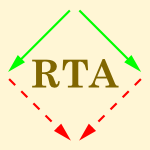 RTA-2007-Tatsuta #λ-calculus #μ-calculus
RTA-2007-Tatsuta #λ-calculus #μ-calculus- The Maximum Length of μ-Reduction in λμ-Calculus (MT), pp. 359–373.
 STOC-2006-VassilevskaW #3d
STOC-2006-VassilevskaW #3d- Finding a maximum weight triangle in n3-Delta time, with applications (VV, RW), pp. 225–231.
 ICML-2006-BezakovaKS #graph #using
ICML-2006-BezakovaKS #graph #using- Graph model selection using maximum likelihood (IB, AK, RS), pp. 105–112.
 ICML-2006-DeCoste #collaboration #matrix #predict #using
ICML-2006-DeCoste #collaboration #matrix #predict #using- Collaborative prediction using ensembles of Maximum Margin Matrix Factorizations (DD), pp. 249–256.
 ICML-2006-RatliffBZ
ICML-2006-RatliffBZ- Maximum margin planning (NDR, JAB, MZ), pp. 729–736.
 ICPR-v1-2006-MiaoQS #composition #principle #using
ICPR-v1-2006-MiaoQS #composition #principle #using- Unsupervised Decomposition of Mixed Pixels Using the Maximum Entropy Principle (LM, HQ, HS), pp. 1067–1070.
 ICPR-v1-2006-YanCK #algorithm #probability #video
ICPR-v1-2006-YanCK #algorithm #probability #video- A Maximum A Posteriori Probability Viterbi Data Association Algorithm for Ball Tracking in Sports Video (FY, WJC, JK), pp. 279–282.
 ICPR-v2-2006-SunV #detection #linear #multi #performance #using
ICPR-v2-2006-SunV #detection #linear #multi #performance #using- Fast Linear Feature Detection Using Multiple Directional Non-Maximum Suppression (CS, PV), pp. 288–291.
 ICPR-v2-2006-XuWH #algorithm #learning
ICPR-v2-2006-XuWH #algorithm #learning- A maximum margin discriminative learning algorithm for temporal signals (WX, JW, ZH), pp. 460–463.
 ICPR-v2-2006-YokobayashiW #correlation #recognition #using
ICPR-v2-2006-YokobayashiW #correlation #recognition #using- Binarization and Recognition of Degraded Characters Using a Maximum Separability Axis in Color Space and GAT Correlation (MY, TW), pp. 885–888.
 ICPR-v3-2006-JoshiNLS #approach #correlation
ICPR-v3-2006-JoshiNLS #approach #correlation- A Maximum-Likelihood Approach to Symbolic Indirect Correlation (AJ, GN, DPL, SCS), pp. 99–103.
 ICPR-v3-2006-LiuZ
ICPR-v3-2006-LiuZ- Minimum Enclosing and Maximum Excluding Machine for Pattern Description and Discrimination (YL, YFZ), pp. 129–132.
 ICPR-v3-2006-NeubeckG #performance
ICPR-v3-2006-NeubeckG #performance- Efficient Non-Maximum Suppression (AN, LJVG), pp. 850–855.
 KDD-2006-LingSBM #development #mining
KDD-2006-LingSBM #development #mining- Maximum profit mining and its application in software development (CXL, VSS, TFWB, NHM), pp. 929–934.
 CC-2006-XueK #fresh look #problem
CC-2006-XueK #fresh look #problem- A Fresh Look at PRE as a Maximum Flow Problem (JX, JK), pp. 139–154.
 VLDB-2005-KarrasM #metric
VLDB-2005-KarrasM #metric- One-Pass Wavelet Synopses for Maximum-Error Metrics (PK, NM), pp. 421–432.
 ICML-2005-RennieS #collaboration #matrix #performance #predict
ICML-2005-RennieS #collaboration #matrix #performance #predict- Fast maximum margin matrix factorization for collaborative prediction (JDMR, NS), pp. 713–719.
 KDD-2005-JinZM #collaboration #recommendation #web
KDD-2005-JinZM #collaboration #recommendation #web- A maximum entropy web recommendation system: combining collaborative and content features (XJ, YZ, BM), pp. 612–617.
 SIGIR-2005-AslamYP #metric #retrieval
SIGIR-2005-AslamYP #metric #retrieval- The maximum entropy method for analyzing retrieval measures (JAA, EY, VP), pp. 27–34.
 SIGIR-2005-LiuJC #information retrieval
SIGIR-2005-LiuJC #information retrieval- A maximum coherence model for dictionary-based cross-language information retrieval (YL, RJ, JYC), pp. 536–543.
 SIGIR-2005-ZhuJXG #classification #multi #using
SIGIR-2005-ZhuJXG #classification #multi #using- Multi-labelled classification using maximum entropy method (SZ, XJ, WX, YG), pp. 274–281.
 SAC-2005-HuangCC #algorithm #approximate #type inference
SAC-2005-HuangCC #algorithm #approximate #type inference- An approximation algorithm for haplotype inference by maximum parsimony (YTH, KMC, TC), pp. 146–150.
 SAT-2005-MaarenN #satisfiability
SAT-2005-MaarenN #satisfiability- Sums of Squares, Satisfiability and Maximum Satisfiability (HvM, LvN), pp. 294–308.
 PODS-2004-GarofalakisK #metric
PODS-2004-GarofalakisK #metric- Deterministic Wavelet Thresholding for Maximum-Error Metrics (MNG, AK), pp. 166–176.
 DLT-2004-ChoffrutGL #on the
DLT-2004-ChoffrutGL #on the- On the Maximum Coefficients of Rational Formal Series in Commuting Variables (CC, MG, VL), pp. 114–126.
 ICML-2004-BanerjeeDGM #analysis #estimation #exponential #product line
ICML-2004-BanerjeeDGM #analysis #estimation #exponential #product line- An information theoretic analysis of maximum likelihood mixture estimation for exponential families (AB, ISD, JG, SM).
 ICML-2004-PhillipsDS #approach #modelling
ICML-2004-PhillipsDS #approach #modelling- A maximum entropy approach to species distribution modeling (SJP, MD, RES).
 ICPR-v3-2004-JagmohanSA #estimation #kernel #using
ICPR-v3-2004-JagmohanSA #estimation #kernel #using- Dense Stereo Matching Using Kernel Maximum Likelihood Estimation (AJ, MKS, NA), pp. 28–31.
 KDD-2004-BanerjeeDGMM #approach #approximate #clustering #matrix
KDD-2004-BanerjeeDGMM #approach #approximate #clustering #matrix- A generalized maximum entropy approach to bregman co-clustering and matrix approximation (AB, ISD, JG, SM, DSM), pp. 509–514.
 KDD-2004-YanZYYLCXFMC #incremental #named
KDD-2004-YanZYYLCXFMC #incremental #named- IMMC: incremental maximum margin criterion (JY, BZ, SY, QY, HL, ZC, WX, WF, WYM, QC), pp. 725–730.
 SAC-2004-KatayamaHN #clique #problem
SAC-2004-KatayamaHN #clique #problem- Solving the maximum clique problem by k-opt local search (KK, AH, HN), pp. 1021–1025.
 SAC-2004-StamatakisLM #performance #scalability
SAC-2004-StamatakisLM #performance #scalability- A fast program for maximum likelihood-based inference of large phylogenetic trees (AS, TL, HM), pp. 197–201.
 ICSM-2003-Mul #internet #legacy
ICSM-2003-Mul #internet #legacy- Making maximum use of legacy code: Transavia internet booking engine (CM), p. 466.
 CIAA-2003-FanLLTWY #algorithm
CIAA-2003-FanLLTWY #algorithm- An Optimal Algorithm for Maximum-Sum Segment and Its Application in Bioinformatics Extended Abstract (THF, SL, HIL, TST, TCW, AY), pp. 251–257.
 ICML-2003-PavlovPPU #modelling
ICML-2003-PavlovPPU #modelling- Mixtures of Conditional Maximum Entropy Models (DP, AP, DMP, LHU), pp. 584–591.
 ICML-2003-WangSPZ #learning #modelling #principle
ICML-2003-WangSPZ #learning #modelling #principle- Learning Mixture Models with the Latent Maximum Entropy Principle (SW, DS, FP, YZ), pp. 784–791.
 DAC-2002-EderB #logic #performance #pipes and filters #verification
DAC-2002-EderB #logic #performance #pipes and filters #verification- Achieving maximum performance: a method for the verification of interlocked pipeline control logic (KE, GB), pp. 135–140.
 STOC-2002-Molloy #graph
STOC-2002-Molloy #graph- The Glauber dynamics on colourings of a graph with high girth and maximum degree (MM), pp. 91–98.
 ICALP-2002-Radzik #bound #network
ICALP-2002-Radzik #bound #network- Improving Time Bounds on Maximum Generalised Flow Computations by Contracting the Network (TR), pp. 611–622.
 ICML-2002-LuPS
ICML-2002-LuPS- Investigating the Maximum Likelihood Alternative to TD(λ) (FL, RP, DS), pp. 403–410.
 ICML-2002-OliverG #markov #modelling #named
ICML-2002-OliverG #markov #modelling #named- MMIHMM: Maximum Mutual Information Hidden Markov Models (NO, AG), pp. 466–473.
 ICML-2002-ParkZ #learning
ICML-2002-ParkZ #learning- A Boosted Maximum Entropy Model for Learning Text Chunking (SBP, BTZ), pp. 482–489.
 ICPR-v1-2002-JunTD #estimation #multi #segmentation
ICPR-v1-2002-JunTD #estimation #multi #segmentation- Multiple Objects Segmentation Based on Maximum-Likelihood Estimation and Optimum Entropy-Distribution (MLE-OED) (JX, HTT, DX), p. 707–?.
 ICPR-v4-2002-ZucchelliSC02a #estimation
ICPR-v4-2002-ZucchelliSC02a #estimation- Maximum Likelihood Structure and Motion Estimation Integrated over Tim (MZ, JSV, HIC), pp. 260–263.
 SAC-2002-ButenkoPSSS #graph #independence #set
SAC-2002-ButenkoPSSS #graph #independence #set- Finding maximum independent sets in graphs arising from coding theory (SB, PMP, IS, VS, PS), pp. 542–546.
 DATE-2001-WormLW #architecture #design #performance #power management
DATE-2001-WormLW #architecture #design #performance #power management- Design of low-power high-speed maximum a priori decoder architectures (AW, HL, NW), pp. 258–267.
 ICDAR-2001-SendaY #approach #recognition
ICDAR-2001-SendaY #approach #recognition- A Maximum-Likelihood Approach to Segmentation-Based Recognition of Unconstrained Handwriting Text (SS, KY), pp. 184–188.
 STOC-2001-MolloyR #graph
STOC-2001-MolloyR #graph- Colouring graphs when the number of colours is nearly the maximum degree (MM, BAR), pp. 462–470.
 SIGIR-2001-ZhangC #estimation
SIGIR-2001-ZhangC #estimation- Maximum Likelihood Estimation for Filtering Thresholds (YZ, JPC), pp. 294–302.
 SAIG-2001-SasanoHT #generative #multi #performance #problem #source code
SAIG-2001-SasanoHT #generative #multi #performance #problem #source code- Generation of Efficient Programs for Solving Maximum Multi-marking Problems (IS, ZH, MT), pp. 72–91.
 ICFP-2000-SasanoHTO #algorithm #linear #problem
ICFP-2000-SasanoHTO #algorithm #linear #problem- Make it practical: a generic linear-time algorithm for solving maximum-weightsum problems (IS, ZH, MT, MO), pp. 137–149.
 ICML-2000-McCallumFP #information management #markov #modelling #segmentation
ICML-2000-McCallumFP #information management #markov #modelling #segmentation- Maximum Entropy Markov Models for Information Extraction and Segmentation (AM, DF, FCNP), pp. 591–598.
 ICML-2000-WesterdijkW #classification #modelling #multi #using
ICML-2000-WesterdijkW #classification #modelling #multi #using- Classification with Multiple Latent Variable Models using Maximum Entropy Discrimination (MW, WW), pp. 1143–1150.
 ICPR-v1-2000-SebeL
ICPR-v1-2000-SebeL- Maximum Likelihood Stereo Matching (NS, MSL), pp. 1900–1903.
 ICPR-v2-2000-LauYT #algorithm #image
ICPR-v2-2000-LauYT #algorithm #image- EDT Based Tracing Maximum Thinning Algorithm on Grey Scale Images (KKL, PCY, YYT), pp. 2863–2866.
 ICPR-v2-2000-Takeda #estimation
ICPR-v2-2000-Takeda #estimation- Maximum Likelihood Estimation of a Sensor Configuration in a Polygonal Environment (HT), pp. 2446–2450.
 ICPR-v3-2000-CohenD #estimation #image
ICPR-v3-2000-CohenD #estimation #image- Motion Estimation in Noisy Ultrasound Images by Maximum Likelihood (BC, ID), pp. 3186–3189.
 ICPR-v3-2000-LuoT #approach #multi #using
ICPR-v3-2000-LuoT #approach #multi #using- Multi-Level Thresholding: Maximum Entropy Approach Using ICM (XL, JT), pp. 3786–3789.
 ICPR-v3-2000-MateiM #bias #reduction
ICPR-v3-2000-MateiM #bias #reduction- Reduction of Bias in Maximum Likelihood Ellipse Fitting (BM, PM), pp. 3802–3806.
 SAC-2000-WuL #clustering #fuzzy #named #network
SAC-2000-WuL #clustering #fuzzy #named #network- F3MCNN: A Fuzzy Minimum Mean Maximum Clustering Neural Network (LGW, HL), pp. 10–14.
 STOC-1999-GabowKT #algorithm
STOC-1999-GabowKT #algorithm- Unique Maximum Matching Algorithms (HNG, HK, RET), pp. 70–78.
 DAC-1998-QiuWP #estimation #order #statistics #using
DAC-1998-QiuWP #estimation #order #statistics #using- Maximum Power Estimation Using the Limiting Distributions of Extreme Order Statistics (QQ, QW, MP), pp. 684–689.
 DATE-1998-JiangC #approximate #estimation
DATE-1998-JiangC #approximate #estimation- Exact and Approximate Estimation for Maximum Instantaneous Current of CMOS Circuits (YMJ, KTC), pp. 698–702.
 STOC-1998-KargerL #graph
STOC-1998-KargerL #graph- Finding Maximum Flows in Undirected Graphs Seems Easier than Bipartite Matching (DRK, MSL), pp. 69–78.
 ICPR-1998-ColmenarezH #detection #fault
ICPR-1998-ColmenarezH #detection #fault- Pattern detection with information-based maximum discrimination and error bootstrapping (AC, TSH), pp. 222–224.
 ICPR-1998-Gimelfarb98a #image #modelling #on the #random
ICPR-1998-Gimelfarb98a #image #modelling #on the #random- On the maximum likelihood potential estimates for Gibbs random field image models (GLG), pp. 1598–1600.
 ICPR-1998-NicollsJ #estimation
ICPR-1998-NicollsJ #estimation- Maximum likelihood estimation of Toeplitz-block-Toeplitz covariances in the presence of subspace interference (FN, GdJ), pp. 1595–1597.
 SAC-1998-LimaR #classification
SAC-1998-LimaR #classification- Maximum likelihood based classification for the microstructure of human sleep (JAL, ACR), pp. 60–64.
 SAC-1998-Marchiori98a #algorithm #clique #heuristic #problem #search-based
SAC-1998-Marchiori98a #algorithm #clique #heuristic #problem #search-based- A simple heuristic based genetic algorithm for the maximum clique problem (EM), pp. 366–373.
 DAC-1997-KrsticC #generative
DAC-1997-KrsticC #generative- Vector Generation for Maximum Instantaneous Current Through Supply Lines for CMOS Circuits (AK, KTC), pp. 383–388.
 STOC-1997-Karger #graph #random #using
STOC-1997-Karger #graph #random #using- Using Random Sampling to Find Maximum Flows in Uncapacitated Undirected Graphs (DRK), pp. 240–249.
 STOC-1996-McCormick #algorithm #parametricity #performance #scheduling
STOC-1996-McCormick #algorithm #parametricity #performance #scheduling- Fast Algorithms for Parametric Scheduling Come from Extensions to Parametric Maximum Flow (STM), pp. 319–328.
 ICALP-1996-Chen #approximate #graph #problem
ICALP-1996-Chen #approximate #graph #problem- Practical Approximation Schemes for Maximum Induced-Subgraph Problems on K_{3, 3}-free or K_5-free Graphs (ZZC), pp. 268–279.
 ICPR-1996-Grim #design #network
ICPR-1996-Grim #design #network- Maximum-likelihood design of layered neural networks (JG), pp. 85–89.
 DAC-1995-MannePBHSMP
DAC-1995-MannePBHSMP- Computing the Maximum Power Cycles of a Sequential Circuit (SM, AP, RIB, GDH, FS, EM, MP), pp. 23–28.
 STOC-1994-Odlyzko #random
STOC-1994-Odlyzko #random- Search for the maximum of a random walk (AMO), pp. 336–345.
 DAC-1993-KriplaniNYH #correlation
DAC-1993-KriplaniNYH #correlation- Resolving Signal Correlations for Estimating Maximum Currents in CMOS Combinational Circuits (HK, FNN, PY, INH), pp. 384–388.
 STOC-1993-FelsnerW #algorithm #combinator #set
STOC-1993-FelsnerW #algorithm #combinator #set- Maximum k-chains in planar point sets: combinatorial structure and algorithms (SF, LW), pp. 146–153.
 ICALP-1993-LundY #approximate #problem
ICALP-1993-LundY #approximate #problem- The Approximation of Maximum Subgraph Problems (CL, MY), pp. 40–51.
 DAC-1992-KriplaniNH #estimation
DAC-1992-KriplaniNH #estimation- Maximum Current Estimation in CMOS Circuits (HK, FNN, INH), pp. 2–7.
 LICS-1992-GroveHK #random
LICS-1992-GroveHK #random- Random Worlds and Maximum Entropy (AJG, JYH, DK), pp. 22–33.
 PODS-1991-GangulyGZ #logic programming
PODS-1991-GangulyGZ #logic programming- Minimum and Maximum Predicates in Logic Programming (SG, SG, CZ), pp. 154–163.
 KDD-1991-ChiuWC #synthesis
KDD-1991-ChiuWC #synthesis- Information Discovery through Hierarchical Maximum Entropy Discretization and Synthesis (DKYC, AKCW, BC), pp. 125–140.
 CAV-1991-Courcoubetis #problem #realtime
CAV-1991-Courcoubetis #problem #realtime- Minimum and Maximum Delay Problems in Real-Time Systems (CC), pp. 399–409.
 STOC-1990-EvenR #distributed #network
STOC-1990-EvenR #distributed #network- The Use of a Synchronizer Yields Maximum Computation Rate in Distributed Networks (Extended Abstract) (SE, SR), pp. 95–105.
 ICALP-1990-Blum #approach #graph
ICALP-1990-Blum #approach #graph- A New Approach to Maximum Matching in General Graphs (NB), pp. 586–597.
 ICALP-1990-CheriyanHM #question
ICALP-1990-CheriyanHM #question- Can A Maximum Flow be Computed on o(nm) Time? (JC, TH, KM), pp. 235–248.
 ICALP-1989-Kenyon-MathieuV #analysis #data type
ICALP-1989-Kenyon-MathieuV #analysis #data type- General Methods for the Analysis of the Maximum Size of Dynamic Data Structures (Extended Abstract) (CKM, JSV), pp. 473–487.
 STOC-1986-GoldbergT #approach #problem
STOC-1986-GoldbergT #approach #problem- A New Approach to the Maximum Flow Problem (AVG, RET), pp. 136–146.
 SIGIR-1986-KantorL #information retrieval
SIGIR-1986-KantorL #information retrieval- The Maximum Entropy Principle in Information Retrieval (PBK, JJL), pp. 269–274.
 POPL-1986-JohnsonW #approach #incremental #type inference
POPL-1986-JohnsonW #approach #incremental #type inference- A Maximum-Flow Approach to Anomaly Isolation in Unification-Based Incremental Type Inference (GFJ, JAW), pp. 44–57.
 STOC-1984-Blum #layout #trade-off
STOC-1984-Blum #layout #trade-off- An Area-Maximum Edge Length Tradeoff for VLSI Layout (NB), pp. 92–97.
 VLDB-1982-Xu #concurrent #formal method #transaction
VLDB-1982-Xu #concurrent #formal method #transaction- A Formal Model for Maximum Concurrency in Transaction Systems with Predeclared Writesets (JX), pp. 77–90.
 STOC-1982-PachlKR #algorithm #bound #distributed #proving
STOC-1982-PachlKR #algorithm #bound #distributed #proving- A Technique for Proving Lower Bounds for Distributed Maximum-Finding Algorithms (JKP, EK, DR), pp. 378–382.
 STOC-1978-Lewis #complexity #on the #problem
STOC-1978-Lewis #complexity #on the #problem- On the Complexity of the Maximum Subgraph Problem (JML), pp. 265–274.
 DAC-2015-LiuZ #configuration management #performance
DAC-2015-LiuZ #configuration management #performance SIGMOD-2015-ChangLQYZ #algorithm #component
SIGMOD-2015-ChangLQYZ #algorithm #component SIGMOD-2015-VerroiosLG #crowdsourcing #named
SIGMOD-2015-VerroiosLG #crowdsourcing #named VLDB-2015-LiuLYXW #graph #independence #set #towards
VLDB-2015-LiuLYXW #graph #independence #set #towards VLDB-2015-MouratidisZP #query #rank
VLDB-2015-MouratidisZP #query #rank ICALP-v1-2015-GawrychowskiMW #matrix #query
ICALP-v1-2015-GawrychowskiMW #matrix #query LATA-2015-DaiW #algorithm #parallel #random #sequence
LATA-2015-DaiW #algorithm #parallel #random #sequence CHI-2015-CarterH #design #research
CHI-2015-CarterH #design #research KDD-2015-LeeWK #consistency #constraints #difference #privacy
KDD-2015-LeeWK #consistency #constraints #difference #privacy SIGIR-2015-Paik #information retrieval #probability
SIGIR-2015-Paik #information retrieval #probability DATE-2014-YuSHEAB #estimation #performance #physics
DATE-2014-YuSHEAB #estimation #performance #physics DocEng-2014-Fan0N #using
DocEng-2014-Fan0N #using DLT-2014-KociumakaRRW #standard #word
DLT-2014-KociumakaRRW #standard #word ICALP-v1-2014-ColeK #algorithm #performance #summary
ICALP-v1-2014-ColeK #algorithm #performance #summary ICALP-v1-2014-GawrychowskiMW #matrix #query
ICALP-v1-2014-GawrychowskiMW #matrix #query ICML-c1-2014-IyerNS #bound #convergence #estimation #kernel
ICML-c1-2014-IyerNS #bound #convergence #estimation #kernel ICML-c1-2014-OrabonaHSJ #on the #random
ICML-c1-2014-OrabonaHSJ #on the #random ICML-c2-2014-HuangCG #estimation #scalability
ICML-c2-2014-HuangCG #estimation #scalability ICML-c2-2014-KontorovichW #multi #nearest neighbour
ICML-c2-2014-KontorovichW #multi #nearest neighbour ICPR-2014-BrownFP #detection #self #using
ICPR-2014-BrownFP #detection #self #using ICPR-2014-LuZXGW #approximate #morphism #quantum
ICPR-2014-LuZXGW #approximate #morphism #quantum ICPR-2014-NguyenTHM #classification #novel
ICPR-2014-NguyenTHM #classification #novel ISSTA-2014-GotliebM #named #network #reduction #testing
ISSTA-2014-GotliebM #named #network #reduction #testing ISSTA-2014-LinK #automation #concurrent #multi #satisfiability #source code #thread #using
ISSTA-2014-LinK #automation #concurrent #multi #satisfiability #source code #thread #using SAT-2014-IgnatievMM #independence #on the #satisfiability #set
SAT-2014-IgnatievMM #independence #on the #satisfiability #set STOC-2013-LeeRS #approach #using
STOC-2013-LeeRS #approach #using ICALP-v1-2013-0002BFGK
ICALP-v1-2013-0002BFGK ICALP-v1-2013-ChekuriNS #graph
ICALP-v1-2013-ChekuriNS #graph ICALP-v1-2013-SviridenkoW #problem #scalability #set
ICALP-v1-2013-SviridenkoW #problem #scalability #set ICML-c1-2013-ChenWC
ICML-c1-2013-ChenWC ICML-c3-2013-Chatzis #infinity
ICML-c3-2013-Chatzis #infinity ICML-c3-2013-CortesMR #classification #kernel #multi
ICML-c3-2013-CortesMR #classification #kernel #multi ICML-c3-2013-PeharzTP #generative #network
ICML-c3-2013-PeharzTP #generative #network RecSys-2013-HammarKN #e-commerce #recommendation #using
RecSys-2013-HammarKN #e-commerce #recommendation #using LICS-2013-AndersonDH #fixpoint #linear #logic #programming
LICS-2013-AndersonDH #fixpoint #linear #logic #programming SAT-2013-IgnatievJM #approach #quantifier #satisfiability
SAT-2013-IgnatievJM #approach #quantifier #satisfiability FLOPS-2012-Morihata #algorithm #parallel #problem
FLOPS-2012-Morihata #algorithm #parallel #problem CIKM-2012-FanZCCO #clustering
CIKM-2012-FanZCCO #clustering ICML-2012-DefazioC #collaboration #performance #visual notation
ICML-2012-DefazioC #collaboration #performance #visual notation ICML-2012-HazanJ #on the #random
ICML-2012-HazanJ #on the #random ICML-2012-PeharzP #learning #network
ICML-2012-PeharzP #learning #network ICML-2012-ZhangS
ICML-2012-ZhangS ICPR-2012-XuanSCS #algorithm #using
ICPR-2012-XuanSCS #algorithm #using KDD-2012-HiraiY #clustering #detection #normalisation #using
KDD-2012-HiraiY #clustering #detection #normalisation #using KDD-2012-RamG #using
KDD-2012-RamG #using MLDM-2012-XuCG #concept #learning #multi #using
MLDM-2012-XuCG #concept #learning #multi #using SAC-2012-IkemotoDO #pseudo #reliability
SAC-2012-IkemotoDO #pseudo #reliability SAC-2012-SeelandBKP
SAC-2012-SeelandBKP DAC-2011-Li #memory management
DAC-2011-Li #memory management DATE-2011-HuangQ #constraints #energy #realtime
DATE-2011-HuangQ #constraints #energy #realtime PLDI-2011-JoseM #fault #locality #satisfiability #using
PLDI-2011-JoseM #fault #locality #satisfiability #using STOC-2011-BravermanR #communication #fault #interactive #towards
STOC-2011-BravermanR #communication #fault #interactive #towards STOC-2011-ChristianoKMST #approximate #graph #performance
STOC-2011-ChristianoKMST #approximate #graph #performance ICALP-v2-2011-AhnG #linear #problem #programming
ICALP-v2-2011-AhnG #linear #problem #programming MLDM-2011-YokotaY #classification #estimation
MLDM-2011-YokotaY #classification #estimation SAC-2011-KatayamaKKM #algorithm #clique #problem
SAC-2011-KatayamaKKM #algorithm #clique #problem PPoPP-2011-HongKOO #algorithm #graph
PPoPP-2011-HongKOO #algorithm #graph SIGMOD-2010-TaoSL #graph
SIGMOD-2010-TaoSL #graph STOC-2010-Hirai #bound #multi #problem
STOC-2010-Hirai #bound #multi #problem ICALP-v1-2010-BonichonGHP
ICALP-v1-2010-BonichonGHP ICALP-v1-2010-MakarychevMS #algorithm #approximate #polynomial #problem #reduction
ICALP-v1-2010-MakarychevMS #algorithm #approximate #polynomial #problem #reduction CIKM-2010-FanWW #clustering #normalisation #performance #visual notation
CIKM-2010-FanWW #clustering #normalisation #performance #visual notation ECIR-2010-AgarwalC #algorithm #information retrieval #ranking
ECIR-2010-AgarwalC #algorithm #information retrieval #ranking ICML-2010-YangJJ #learning
ICML-2010-YangJJ #learning ICML-2010-ZiebartBD #interactive #modelling #principle
ICML-2010-ZiebartBD #interactive #modelling #principle ICPR-2010-AriA #estimation #modelling #optimisation #using
ICPR-2010-AriA #estimation #modelling #optimisation #using ICPR-2010-DukkipatiYM #classification #feature model #modelling
ICPR-2010-DukkipatiYM #classification #feature model #modelling ICDAR-2009-DoA #recognition
ICDAR-2009-DoA #recognition STOC-2009-YoshidaYI #algorithm #approximate
STOC-2009-YoshidaYI #algorithm #approximate ICALP-v1-2009-AgnarssonHL #algorithm #independence #problem #set
ICALP-v1-2009-AgnarssonHL #algorithm #independence #problem #set ICALP-v2-2009-AzarMMPS #adaptation #network
ICALP-v2-2009-AzarMMPS #adaptation #network CIKM-2009-GuZ #clustering
CIKM-2009-GuZ #clustering CIKM-2009-LinLK #named #novel #similarity
CIKM-2009-LinLK #named #novel #similarity ICML-2009-GiesekePK #clustering #performance
ICML-2009-GiesekePK #clustering #performance ICML-2009-ZhuAX #classification #modelling #named #topic
ICML-2009-ZhuAX #classification #modelling #named #topic RecSys-2009-WeimerKB #matrix #recommendation
RecSys-2009-WeimerKB #matrix #recommendation GPCE-2009-NedunuriC #performance #problem #source code #synthesis
GPCE-2009-NedunuriC #performance #problem #source code #synthesis ASPLOS-2009-HofmannRW
ASPLOS-2009-HofmannRW DATE-2008-Marques-SilvaP #algorithm #satisfiability #using
DATE-2008-Marques-SilvaP #algorithm #satisfiability #using PEPM-2008-Mu #algorithm #bound #problem
PEPM-2008-Mu #algorithm #bound #problem ICALP-A-2008-CheboluFM #graph #random
ICALP-A-2008-CheboluFM #graph #random CIKM-2008-AnnexsteinS #clustering #collaboration #user satisfaction
CIKM-2008-AnnexsteinS #clustering #collaboration #user satisfaction ECIR-2008-YahyaeiM #email #retrieval
ECIR-2008-YahyaeiM #email #retrieval ICML-2008-DembczynskiKS
ICML-2008-DembczynskiKS ICML-2008-KuzelkaZ #estimation #first-order #performance
ICML-2008-KuzelkaZ #estimation #first-order #performance ICML-2008-ZhaoWZ #clustering #multi #performance
ICML-2008-ZhaoWZ #clustering #multi #performance ICML-2008-ZhuXZ #markov #network
ICML-2008-ZhuXZ #markov #network ICPR-2008-ChivertonMX #difference #similarity
ICPR-2008-ChivertonMX #difference #similarity ICPR-2008-PiccardiGO #classification #modelling #reduction
ICPR-2008-PiccardiGO #classification #modelling #reduction ICPR-2008-WangYY #analysis #fuzzy #recognition
ICPR-2008-WangYY #analysis #fuzzy #recognition ICPR-2008-YangWRY #feature model
ICPR-2008-YangWRY #feature model ICPR-2008-ZhangD #comprehension #visual notation
ICPR-2008-ZhangD #comprehension #visual notation SAC-2008-LevadaMTS #estimation #higher-order #parametricity #pseudo
SAC-2008-LevadaMTS #estimation #higher-order #parametricity #pseudo SAT-2008-Marques-SilvaM #algorithm #effectiveness #satisfiability #towards
SAT-2008-Marques-SilvaM #algorithm #effectiveness #satisfiability #towards DATE-2007-MangassarianVSNA #estimation #process #pseudo #satisfiability #using
DATE-2007-MangassarianVSNA #estimation #process #pseudo #satisfiability #using STOC-2007-HayesVV #graph
STOC-2007-HayesVV #graph ICALP-2007-AlonFGKS #algorithm #problem
ICALP-2007-AlonFGKS #algorithm #problem ICML-2007-DudikBS #estimation
ICML-2007-DudikBS #estimation ICML-2007-TsampoukaS #algorithm #approximate
ICML-2007-TsampoukaS #algorithm #approximate ICML-2007-ZhangTK #clustering
ICML-2007-ZhangTK #clustering SIGIR-2007-ZhangX #estimation #modelling #performance
SIGIR-2007-ZhangX #estimation #modelling #performance RTA-2007-Tatsuta #λ-calculus #μ-calculus
RTA-2007-Tatsuta #λ-calculus #μ-calculus STOC-2006-VassilevskaW #3d
STOC-2006-VassilevskaW #3d ICML-2006-BezakovaKS #graph #using
ICML-2006-BezakovaKS #graph #using ICML-2006-DeCoste #collaboration #matrix #predict #using
ICML-2006-DeCoste #collaboration #matrix #predict #using ICML-2006-RatliffBZ
ICML-2006-RatliffBZ ICPR-v1-2006-MiaoQS #composition #principle #using
ICPR-v1-2006-MiaoQS #composition #principle #using ICPR-v1-2006-YanCK #algorithm #probability #video
ICPR-v1-2006-YanCK #algorithm #probability #video ICPR-v2-2006-SunV #detection #linear #multi #performance #using
ICPR-v2-2006-SunV #detection #linear #multi #performance #using ICPR-v2-2006-XuWH #algorithm #learning
ICPR-v2-2006-XuWH #algorithm #learning ICPR-v2-2006-YokobayashiW #correlation #recognition #using
ICPR-v2-2006-YokobayashiW #correlation #recognition #using ICPR-v3-2006-JoshiNLS #approach #correlation
ICPR-v3-2006-JoshiNLS #approach #correlation ICPR-v3-2006-LiuZ
ICPR-v3-2006-LiuZ ICPR-v3-2006-NeubeckG #performance
ICPR-v3-2006-NeubeckG #performance KDD-2006-LingSBM #development #mining
KDD-2006-LingSBM #development #mining CC-2006-XueK #fresh look #problem
CC-2006-XueK #fresh look #problem VLDB-2005-KarrasM #metric
VLDB-2005-KarrasM #metric ICML-2005-RennieS #collaboration #matrix #performance #predict
ICML-2005-RennieS #collaboration #matrix #performance #predict KDD-2005-JinZM #collaboration #recommendation #web
KDD-2005-JinZM #collaboration #recommendation #web SIGIR-2005-AslamYP #metric #retrieval
SIGIR-2005-AslamYP #metric #retrieval SIGIR-2005-LiuJC #information retrieval
SIGIR-2005-LiuJC #information retrieval SIGIR-2005-ZhuJXG #classification #multi #using
SIGIR-2005-ZhuJXG #classification #multi #using SAC-2005-HuangCC #algorithm #approximate #type inference
SAC-2005-HuangCC #algorithm #approximate #type inference SAT-2005-MaarenN #satisfiability
SAT-2005-MaarenN #satisfiability PODS-2004-GarofalakisK #metric
PODS-2004-GarofalakisK #metric DLT-2004-ChoffrutGL #on the
DLT-2004-ChoffrutGL #on the ICML-2004-BanerjeeDGM #analysis #estimation #exponential #product line
ICML-2004-BanerjeeDGM #analysis #estimation #exponential #product line ICML-2004-PhillipsDS #approach #modelling
ICML-2004-PhillipsDS #approach #modelling ICPR-v3-2004-JagmohanSA #estimation #kernel #using
ICPR-v3-2004-JagmohanSA #estimation #kernel #using KDD-2004-BanerjeeDGMM #approach #approximate #clustering #matrix
KDD-2004-BanerjeeDGMM #approach #approximate #clustering #matrix KDD-2004-YanZYYLCXFMC #incremental #named
KDD-2004-YanZYYLCXFMC #incremental #named SAC-2004-KatayamaHN #clique #problem
SAC-2004-KatayamaHN #clique #problem SAC-2004-StamatakisLM #performance #scalability
SAC-2004-StamatakisLM #performance #scalability ICSM-2003-Mul #internet #legacy
ICSM-2003-Mul #internet #legacy CIAA-2003-FanLLTWY #algorithm
CIAA-2003-FanLLTWY #algorithm ICML-2003-PavlovPPU #modelling
ICML-2003-PavlovPPU #modelling ICML-2003-WangSPZ #learning #modelling #principle
ICML-2003-WangSPZ #learning #modelling #principle DAC-2002-EderB #logic #performance #pipes and filters #verification
DAC-2002-EderB #logic #performance #pipes and filters #verification STOC-2002-Molloy #graph
STOC-2002-Molloy #graph ICALP-2002-Radzik #bound #network
ICALP-2002-Radzik #bound #network ICML-2002-LuPS
ICML-2002-LuPS ICML-2002-OliverG #markov #modelling #named
ICML-2002-OliverG #markov #modelling #named ICML-2002-ParkZ #learning
ICML-2002-ParkZ #learning ICPR-v1-2002-JunTD #estimation #multi #segmentation
ICPR-v1-2002-JunTD #estimation #multi #segmentation ICPR-v4-2002-ZucchelliSC02a #estimation
ICPR-v4-2002-ZucchelliSC02a #estimation SAC-2002-ButenkoPSSS #graph #independence #set
SAC-2002-ButenkoPSSS #graph #independence #set DATE-2001-WormLW #architecture #design #performance #power management
DATE-2001-WormLW #architecture #design #performance #power management ICDAR-2001-SendaY #approach #recognition
ICDAR-2001-SendaY #approach #recognition STOC-2001-MolloyR #graph
STOC-2001-MolloyR #graph SIGIR-2001-ZhangC #estimation
SIGIR-2001-ZhangC #estimation SAIG-2001-SasanoHT #generative #multi #performance #problem #source code
SAIG-2001-SasanoHT #generative #multi #performance #problem #source code ICFP-2000-SasanoHTO #algorithm #linear #problem
ICFP-2000-SasanoHTO #algorithm #linear #problem ICML-2000-McCallumFP #information management #markov #modelling #segmentation
ICML-2000-McCallumFP #information management #markov #modelling #segmentation ICML-2000-WesterdijkW #classification #modelling #multi #using
ICML-2000-WesterdijkW #classification #modelling #multi #using ICPR-v1-2000-SebeL
ICPR-v1-2000-SebeL ICPR-v2-2000-LauYT #algorithm #image
ICPR-v2-2000-LauYT #algorithm #image ICPR-v2-2000-Takeda #estimation
ICPR-v2-2000-Takeda #estimation ICPR-v3-2000-CohenD #estimation #image
ICPR-v3-2000-CohenD #estimation #image ICPR-v3-2000-LuoT #approach #multi #using
ICPR-v3-2000-LuoT #approach #multi #using ICPR-v3-2000-MateiM #bias #reduction
ICPR-v3-2000-MateiM #bias #reduction SAC-2000-WuL #clustering #fuzzy #named #network
SAC-2000-WuL #clustering #fuzzy #named #network STOC-1999-GabowKT #algorithm
STOC-1999-GabowKT #algorithm DAC-1998-QiuWP #estimation #order #statistics #using
DAC-1998-QiuWP #estimation #order #statistics #using DATE-1998-JiangC #approximate #estimation
DATE-1998-JiangC #approximate #estimation STOC-1998-KargerL #graph
STOC-1998-KargerL #graph ICPR-1998-ColmenarezH #detection #fault
ICPR-1998-ColmenarezH #detection #fault ICPR-1998-Gimelfarb98a #image #modelling #on the #random
ICPR-1998-Gimelfarb98a #image #modelling #on the #random ICPR-1998-NicollsJ #estimation
ICPR-1998-NicollsJ #estimation SAC-1998-LimaR #classification
SAC-1998-LimaR #classification SAC-1998-Marchiori98a #algorithm #clique #heuristic #problem #search-based
SAC-1998-Marchiori98a #algorithm #clique #heuristic #problem #search-based DAC-1997-KrsticC #generative
DAC-1997-KrsticC #generative STOC-1997-Karger #graph #random #using
STOC-1997-Karger #graph #random #using STOC-1996-McCormick #algorithm #parametricity #performance #scheduling
STOC-1996-McCormick #algorithm #parametricity #performance #scheduling ICALP-1996-Chen #approximate #graph #problem
ICALP-1996-Chen #approximate #graph #problem ICPR-1996-Grim #design #network
ICPR-1996-Grim #design #network DAC-1995-MannePBHSMP
DAC-1995-MannePBHSMP STOC-1994-Odlyzko #random
STOC-1994-Odlyzko #random DAC-1993-KriplaniNYH #correlation
DAC-1993-KriplaniNYH #correlation STOC-1993-FelsnerW #algorithm #combinator #set
STOC-1993-FelsnerW #algorithm #combinator #set ICALP-1993-LundY #approximate #problem
ICALP-1993-LundY #approximate #problem DAC-1992-KriplaniNH #estimation
DAC-1992-KriplaniNH #estimation LICS-1992-GroveHK #random
LICS-1992-GroveHK #random PODS-1991-GangulyGZ #logic programming
PODS-1991-GangulyGZ #logic programming KDD-1991-ChiuWC #synthesis
KDD-1991-ChiuWC #synthesis CAV-1991-Courcoubetis #problem #realtime
CAV-1991-Courcoubetis #problem #realtime STOC-1990-EvenR #distributed #network
STOC-1990-EvenR #distributed #network ICALP-1990-Blum #approach #graph
ICALP-1990-Blum #approach #graph ICALP-1990-CheriyanHM #question
ICALP-1990-CheriyanHM #question ICALP-1989-Kenyon-MathieuV #analysis #data type
ICALP-1989-Kenyon-MathieuV #analysis #data type STOC-1986-GoldbergT #approach #problem
STOC-1986-GoldbergT #approach #problem SIGIR-1986-KantorL #information retrieval
SIGIR-1986-KantorL #information retrieval POPL-1986-JohnsonW #approach #incremental #type inference
POPL-1986-JohnsonW #approach #incremental #type inference STOC-1984-Blum #layout #trade-off
STOC-1984-Blum #layout #trade-off VLDB-1982-Xu #concurrent #formal method #transaction
VLDB-1982-Xu #concurrent #formal method #transaction STOC-1982-PachlKR #algorithm #bound #distributed #proving
STOC-1982-PachlKR #algorithm #bound #distributed #proving STOC-1978-Lewis #complexity #on the #problem
STOC-1978-Lewis #complexity #on the #problem









